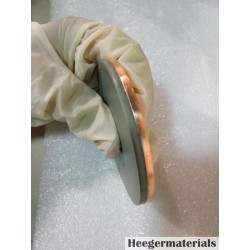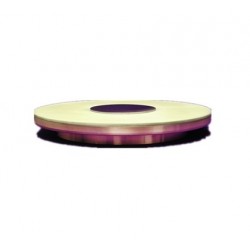Target Bonding Service
- Products
- Deposition Materials
- Refractory Metals
- Rare Earth Materials
- Powder
- Technical Ceramics
- Lanthanum Hexaboride (LaB6) Materials
- Pyrolytic Boron Nitride (PBN) Products
- Boron Nitride (BN) Products
- Alumina Ceramics (Al2O3)
- Aluminum Nitride (AlN) Products
- Silicon NItride (Si3N4) Ceramics
- Silicon Carbide (SiC) Ceramics
- Graphite Products
- Zirconia Ceramic
- MAX Phase Ceramic Materials
- Boron Carbide Ceramics (B4C)
- Magnesium Oxide Ceramics (MgO)
- Quartz Ceramics
- Macor Machinable Glass Ceramic
- Beryllium Oxide (BeO) Ceramics
- Piezoelectric Ceramics
- High Purity Materials
- Precious Metals
- Chemicals
- Crystals & Substrates
- Applications
- Other
Heeger Materials Inc provides Indium-based Metallic Bonding, Elastomer Bonding, and OFHC Copper Backing Plates at a competitive price. The thermal and mechanical integrity of the bond between a sputtering target and its backing plate is essential to ensure optimum sputtering performance.
Target Bonding Service There are 2 products.
Indium-based Metallic Bonding
Indium-based Metallic bonding utilizes an Indium Alloy and is rated to 150 degrees C. It provides good thermal and electrical conductivity and is recommended for most sputtering applications.
Elastomer Bonding
Elastomer is an alternative bonding method that touts a higher temperature capability over the indium bond. Elastomer bonds are recommended when customers are consistently melting indium bonds. The major advantages of Elastomer bonding are its low cure temperature (reducing internal bond stresses from thermal mismatch) and high operation temperature (250...
Sputtering Targets Bonding Description
The thermal and mechanical integrity of the bond between a sputtering target and its backing plate is super important to make sure optimum sputtering performance. Heeger Materials supplies Indium-based Metallic Bonding, Elastomer Bonding, and OFHC Copper Backing Plates at a competitive price.
Benefits of Bonding Sputtering Targets
A material can transfer heat through its thickness faster as the material gets thinner. for many sputtering R&D guns, the thickness of the target is reduced to half when it's bonded to a backing plate because the gun features a maximum thickness allowance. The copper backing plate comprises the opposite half the thickness. The thinner target can cool more effectively than a thicker target because the space that the warmth generated on the surface of the target has got to visit reach the cooled side is reduced.
When bonded, a ceramic material can cool more efficiently. The target is in intimate contact with the conductive solder layer which pulls the warmth from the target surface and into the copper backing plate. The copper backing plate is in touch with the water-cooled gun therefore the heat is transferred through both pieces of copper and is removed through the cooling water.
Some ceramic sputtering targets will crack during the sputtering process thanks to thermal shock no matter whether the target is bonded or the ramping procedure won't condition the target. Bonded targets can usually still be used even after a target crack occurs, whereas typically an un-bonded target cannot.



